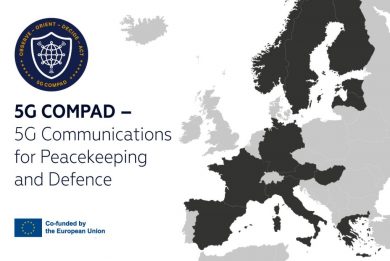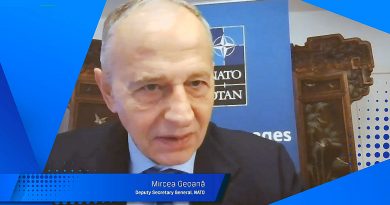
The EU approves the third round of PESCO projects, now focusing on their implementation
By Luca Peruzzi
The EU Council has formally increased to 47 the number of capability projects under the umbrella of its Permanent Structured Cooperation (PESCO) in defence, which comprises 25 of the overall EU 28-member states, since the initiative was launched two years ago. On 12 November, the EU Council added 13 new projects to the initial set of 17 projects already approved on 6 March 2018 and the second set of 17 projects approved on 20 November 2018.
Seven of the new PESCO projects are focused on training or operational/technical cooperation covering areas such as cyber, diving, tactical, medical as well as chemical, biological, radiological and nuclear defence (CBRND) training. The remaining projects focus on enhancing EU collaborative actions as well as on capability development on sea, air and space.
“The focus from now on will be on the implementation of the projects to make sure they deliver on their purpose” Federica Mogherini, the EU’s foreign and defence policy chief said to media after the EU defence ministers meeting in Brussels to approve the third round of PESCO projects. “With the full speed on implementation and delivery, the EU Council won’t add new projects for two-years’ time from now”, said Federica Mogherini, adding that “the focus from now will be the level of consistency the member states will give to the different projects”.
All PESCO programmes are open to the participation of other EU member states in addition to the countries already involved, while regarding the third-country involvement, the EU foreign and defence policy chief said that “we discussed it today and are closer than ever to find an agreement on the criteria”. However, “the agreement is not there yet, and work will continue in the coming months. Everyone is aware that this is extremely important for PESCO projects”.
Among the six projects targeting the design and development of new systems, equipment and advanced capability developments, in the aerospace domain the EU Council has approved the Timely Warning and Interception with Space-based TheatER surveillance (TWISTER) programme coordinated by France and involving Finland, Italy, Netherlands and Spain. Established to counter complex and evolving air threats, notably in the missile domain, the project therefore aims at strengthening the ability “to better detect, track and counter these threats through a combination of enhanced capabilities for space-based early warning and endo atmospheric interceptors. It promotes the European self-standing ability to contribute to NATO Ballistic-Missile Defence (BMD)”, states the updated programme file (click here for the full document).
The Airborne Electronic Attack (AEA) programme, led by Spain and including France and Sweden, aims at allowing European and NATO air forces to safely operate within EU territories as well as when forces are projected in other areas of operations. It covers the design, development and testing of a multi-jamming capability (including stand-off, stand-in and escort jamming), that will be based on state-of-the-art existing technological cores at European industries level, including in particular Cyber Electro Magnetic Activities (CEMA).
Involving Italy as coordinator, France and Romania, the European Global RPAS Insertion Architecture System programme is to develop with an incremental approach a robust and persistent Modelling and Simulation (M&S) architecture to analyse, evaluate and define Remotely Piloted Aircraft Systems (RPAS) innovative procedures including insertion and integration into the Single European Sky system. It is also to establish a multinational competence center able to ensure the development of concepts, doctrines and standardization for Unmanned Aircraft System (UAS) and Counter-UAS use as well as basic and advanced training on selected RPAS.
The Maritime Unmanned Anti-Submarine System (MUSAS), coordinated by Portugal and involving France, Spain and Sweden, aims at developing and delivering an advanced command, control and communications (C3) service architecture for anti-submarine warfare, taking advantage of cutting-edge technology and artificial intelligence, in order to counter opponents’ area denial methods. Moreover, it will enhance the protection of underwater high-value infrastructures as well as sea-based energy systems, providing quick response with appropriate levels of force to intrusion or threat to sea lines of communication.
The European Patrol Corvette (EPC), led by Italy and involving France, is to design and develop a prototype for a new class of military platforms, which allows to host several systems and payloads, in order to accomplish, with a modular and flexible approach, a large number of tasks and missions.
The objective of the Cyber and Information Domain Coordination Center (CIDCC), led by Germany and involving the Czech Republic, Hungary, Netherlands and Spain, is to develop, establish and operate a multinational Cyber and Information Domain (CID) Coordination Center (CIDCC) as a standing multinational military element, where – in line with the 13 June 2018European resolution on cyber defence – the participating member states continuously contribute with national staff but decide sovereignly on case-by- case basis for which threat, incident and operation they contribute with means or information.
The Council has also approved the EU Collaborative Warfare Capabilities (ECoWAR) (coordinated by France and including Belgium, Hungary, Romania, Spain and Sweden) programme to face collectively and efficiently the upcoming threats that are more and more diffuse, rapid, and hard to detect and to neutralize, as well as the Materials And Components for the technological EU competitiveness (MAC-EU) programme (led by France and Portugal, Romania, Spain). The latter is to develop the European Defence Technological and Industrial Base (EDTIB) in the area of materials and components technologies, specifically those for which the security of supply and the freedom of use may be restricted.
In the areas of training or operational/technical cooperation, the new programmes include the establishing of an integrated joint tactical training and simulation cloud-based network center, a cyber academia and innovation hub, a special operations forces medical training centre, a chemical, biological, radiological and nuclear defence (CBRND) range and an EU network of diving centers.
The level of ambition of these new programmes requires significant funding although no budgetary indications have been provided at this stage. The EU’s foreign and defence policy chief commented saying that from an EU side there will be communication on its budget involvement and programme development. “I’m pretty sure that member states involved in the projects would be more than willing to share that, but the final response is in their hands”.
Photo courtesy European Union



